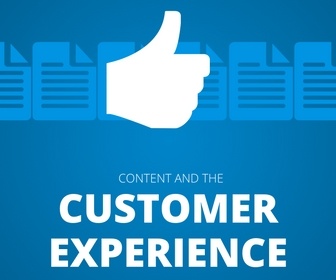
The vast majority of business leaders view customer experience as the key differentiator for their business. In fact, Gartner estimates that 89% of businesses will compete primarily on customer experience by 2017.
But unlike price or product quality, where control ultimately resides with the business, successfully providing a better customer experience than every other competitor relies on lots of moving parts…most importantly the customer’s needs, expectations and perceptions. Not surprisingly there can be a huge discrepancy between businesses that think they provide an outstanding experience, and the number of customers that would agree with them.
What defines customer experience?
While the overall customer experience is more than each individual service interaction, it’s obvious that providing great service lays the foundation for a great experience.
Like beauty, a great service experience is largely in the eye of the beholder. What makes service great will vary by industry, the nature of your market, customer expectations and what competitors are up to. However, organisations that manage information about their customers well, and use it effectively each time they engage will be the ones that edge ahead of the pack in the customer experience competition.
Let’s take my accountant as an example.
My tax affairs are not that complicated, but as a freelancer generating income through a small family business, I like to make sure my annual return is in the hands of the professionals. I’ve been with the same firm for at least 10 years now – they advised on our business structure and by looking after each member of our family, they know the bigger picture.
Mine is not a big account, so I accept that my annual return is likely to get passed around the team. What’s harder to accept is answering the same questions each year on income sources, how we bill and the structure of the company. It’s annoying when admin staff don’t know when questions have been asked and answered already via email directly with the accountant or business advisor.
In this respect I don’t think my expectations are all that unusual when engaging a professional services firm. I expect that whenever I contact the office, the person I speak with will be in a position to help me based on my past interactions with the firm. That means documentation that I’ve previously provided, and email communications with each and every contact point. I don’t expect to have to go through the same spiel each time I contact them for a simple update or answer.
Fair or not, it means all staff that may work on my account need to have access to my specific information – including documents and emails. And they need it quickly, so they can resolve my queries while I’m on the phone without having to go away and consult someone.
Documents and email as assets in shaping the customer experience
Herein lies the problem, particularly for smaller business operations. In fact, maintaining a holistic view of the customer is cited as the top challenge by business leaders pursuing a customer experience strategy.
When staff approach document management in silos, they often can’t find, or don’t have access to, documents prepared by others for the same client in previous years. Customer Relationship Management (CRM) solutions when implemented and used effectively, can help enormously when it comes to tracking the communication history with a client. But when that correspondence is isolated from business documents, “I’ll have to get back to you on that” becomes the default customer experience.
A cloud based document management system allows employees, wherever they are located, to be armed with all the resources they need to help a client. Linking emails and documents themselves in the same system can dramatically cut time searching. Vital documents can be found with their email trail, providing greater context to documents should an employee need it.
Of course not all employees should have access to each and every file. Managing permissions to protect the security and integrity of customer information is just as important as informed service delivery.
The customer information contained in your email correspondence and client files is a valuable asset. When managed and used effectively, it has the potential to transform your business from merely meeting expectations to delivering an outstanding service experience. Ultimately, whether you look to technologies like CRM and document management or work manually within your own policies and procedures, simplicity and consistency will be key to competing successfully on customer experience.
